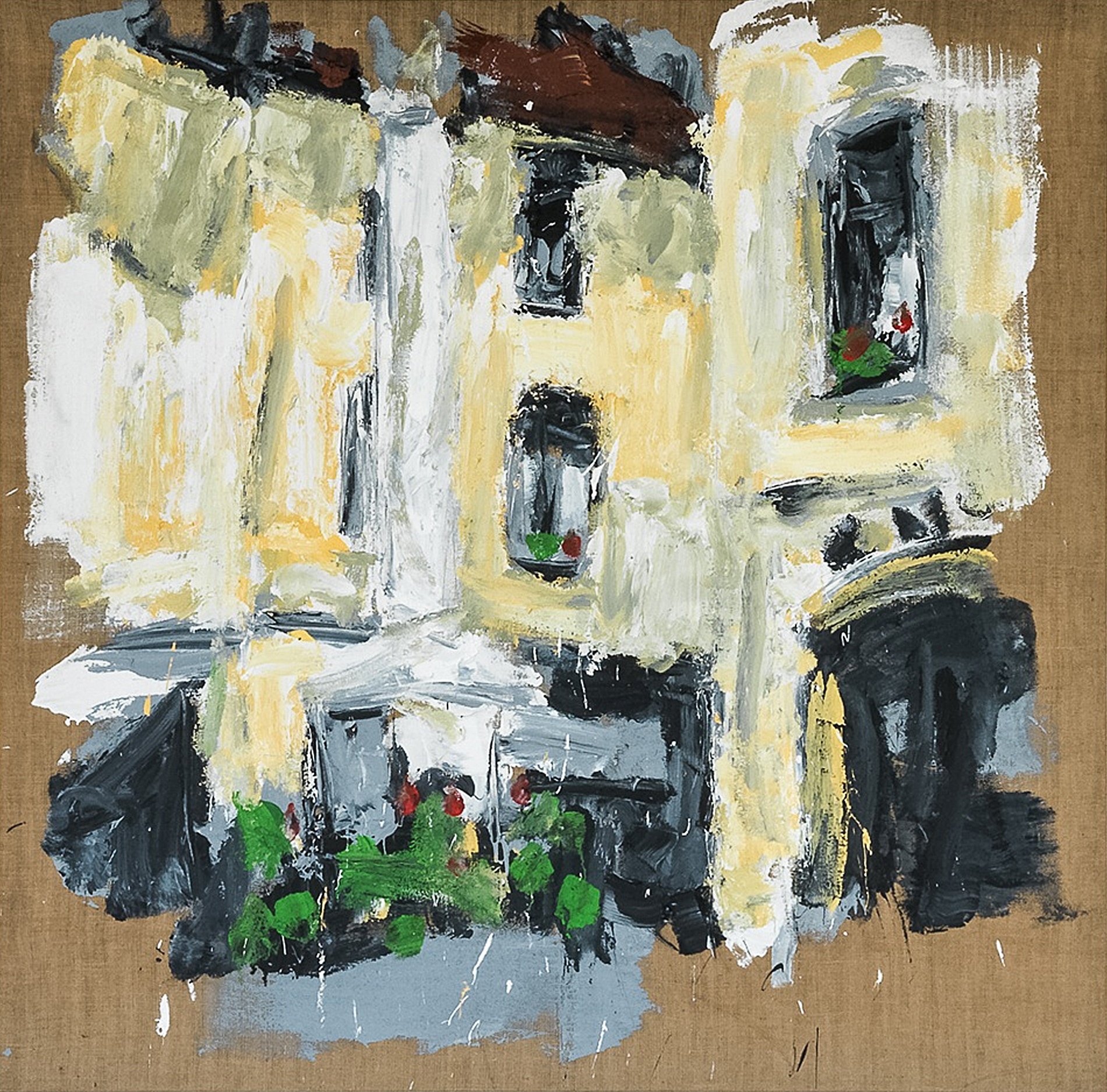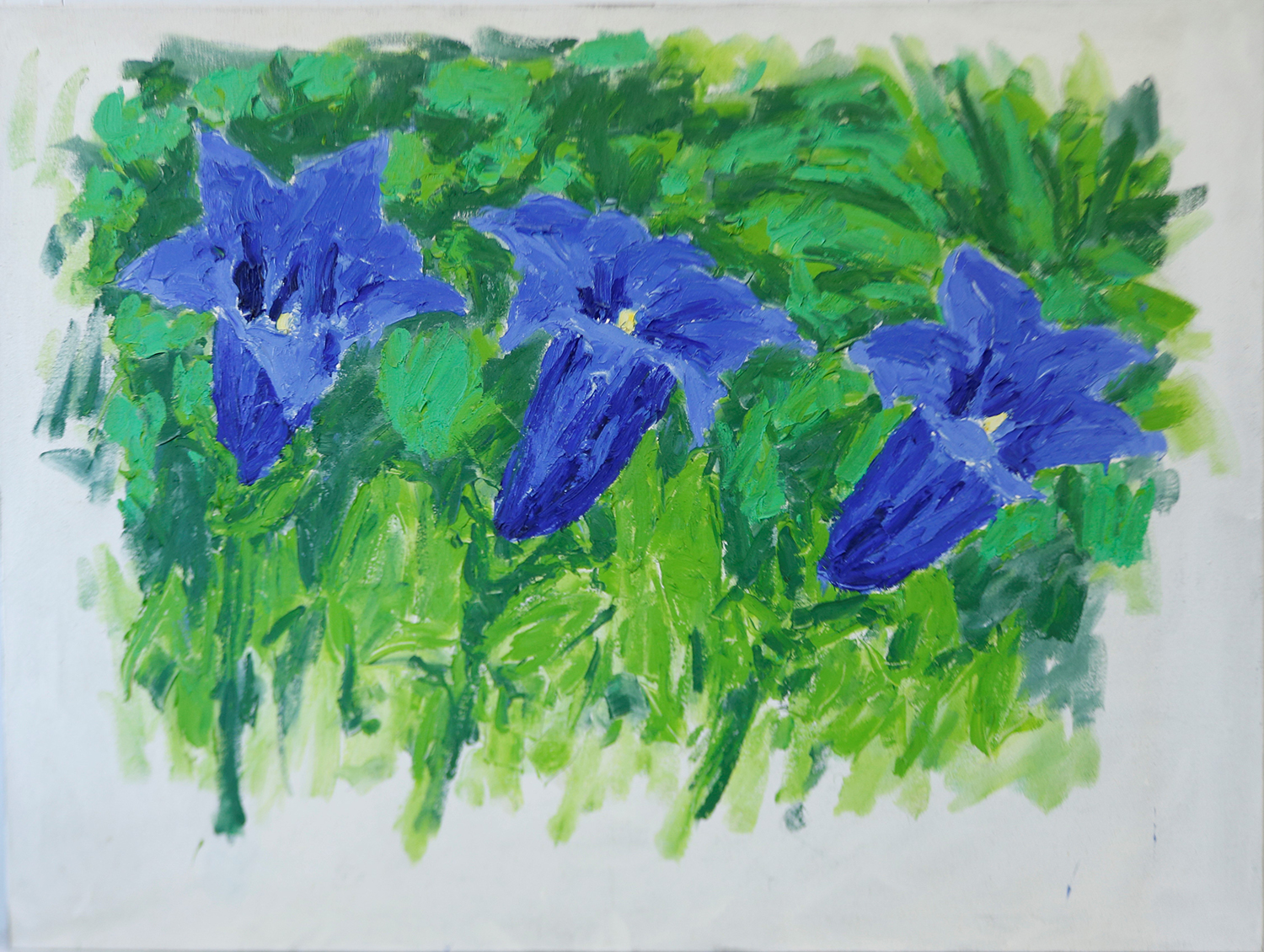Having studied sculpture at the Hochschule Mannheim, Christian Lindow turned to figurative painting in 1973. He was among those artists of the mid-1970s who, in a cultural context dominated by the perceived failure of minimalism and conceptualism, decided to revive the painting tradition, reengaging it through images.
In a direct confrontation with the work’s materiality, he opts for a large, turbulent type of painting created with broad brushstrokes and quick body movements. The physical intensity of the pictorial treatment counterbalances the triviality and familiarity of an altogether traditional iconography: landscapes, flowers, portraits, still lifes, fruits. The artist bases his work on miscellaneous images found on postcards or in magazines, their neutrality enabling him to emphasise the very essence of painting.
Using a very free technique that excludes any possibility of error, Lindow ripens his work by almost cloning his own paintings until he achieves the right harmony between the material and the image, a product of patient maturation. His body of work is therefore like a succession of series of canvases that relentlessly repeat the same motifs until they solidify in semi-abstract paintings.
In 1982, Christian Lindow was invited to Documenta 7 in Kassel, where he presented his first large black-and-white portraits. That same year, his work was exhibited at the Kunsthalle Bern at the instigation of its director Jean-Hubert Martin, then at Le Consortium in Dijon in 1984. In 1988, he returned to the Kunsthalle Bern with his series of monumental still lifes with prunes.
Following the artist’s accidental death in 1990, the Kunstmuseum Winterthur, the Lindenau-Museum in Altenburg and the Musée des beaux-arts in La Chaux-de-Fonds dedicated a joint retrospective to his work in 1995. His paintings then sunk into oblivion for twenty-five years, relegated to the back of his studio. They were only rediscovered in 2015, when an exhibition was held at the Consortium de Dijon in collaboration with Fabrice Stroun, who finally returned Lindow’s singular paintings to their rightful status.
“The fact that it is reappearing today might be due to renewed interest in a kind of painting devoid of intellectual or technical devices, disburdened of scholarly references, but more attentive to how it is shaped, constructed, how it seizes upon images and then distances and separates itself from them in order to move towards a poignant abstraction.” Xavier Douroux
In a direct confrontation with the work’s materiality, he opts for a large, turbulent type of painting created with broad brushstrokes and quick body movements. The physical intensity of the pictorial treatment counterbalances the triviality and familiarity of an altogether traditional iconography: landscapes, flowers, portraits, still lifes, fruits. The artist bases his work on miscellaneous images found on postcards or in magazines, their neutrality enabling him to emphasise the very essence of painting.
Using a very free technique that excludes any possibility of error, Lindow ripens his work by almost cloning his own paintings until he achieves the right harmony between the material and the image, a product of patient maturation. His body of work is therefore like a succession of series of canvases that relentlessly repeat the same motifs until they solidify in semi-abstract paintings.
In 1982, Christian Lindow was invited to Documenta 7 in Kassel, where he presented his first large black-and-white portraits. That same year, his work was exhibited at the Kunsthalle Bern at the instigation of its director Jean-Hubert Martin, then at Le Consortium in Dijon in 1984. In 1988, he returned to the Kunsthalle Bern with his series of monumental still lifes with prunes.
Following the artist’s accidental death in 1990, the Kunstmuseum Winterthur, the Lindenau-Museum in Altenburg and the Musée des beaux-arts in La Chaux-de-Fonds dedicated a joint retrospective to his work in 1995. His paintings then sunk into oblivion for twenty-five years, relegated to the back of his studio. They were only rediscovered in 2015, when an exhibition was held at the Consortium de Dijon in collaboration with Fabrice Stroun, who finally returned Lindow’s singular paintings to their rightful status.
“The fact that it is reappearing today might be due to renewed interest in a kind of painting devoid of intellectual or technical devices, disburdened of scholarly references, but more attentive to how it is shaped, constructed, how it seizes upon images and then distances and separates itself from them in order to move towards a poignant abstraction.” Xavier Douroux

